Appendix B
Overview of Findings from the 2000 E&S Survey
This appendix contains 21 figures that show basic findings from the 2000 E&S survey. They depict racial, ethnic, and gender differences for many of the variables in the survey. Because the 2000 E&S survey was administered to nearly 100 percent of public schools in the United States for the first time since 1976, the figures are included to provide the reader with a pictorial overview of the data.
Most of the figures are based solely on data from the E&S survey. Figures depicting relationships between the average socioeconomic status of the students of a school1 and that school’s composition by race, ethnicity, and English proficiency also rely on data from the Common Core of Data that were linked to the 2000 E&S dataset.
The figures were produced for the committee by Douglas E. Ready of the University of Michigan.
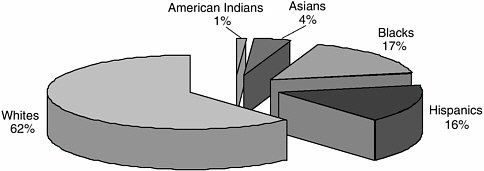
FIGURE B-1 Race and ethnicity of U.S. public school students, 2000–2001. (Data are projections from the 2000 E&S survey.)
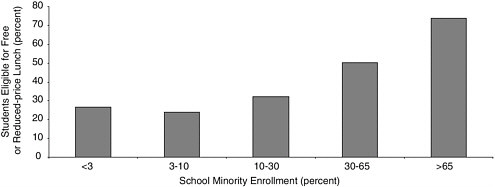
FIGURE B-2 School minority enrollment and poverty concentration. (Minority enrollment data from the 2000 E&S survey. Data on free/reduced-price lunch eligibility from the Common Core of Data, 2000–2001. The data do not include special education and alternative schools [school n = 69,029]. Minority enrollment includes American Indians, blacks, and Hispanics. Data on free/reduced-price lunch eligibility are not available for the following states: AZ, CT, IL, TN and WA.)
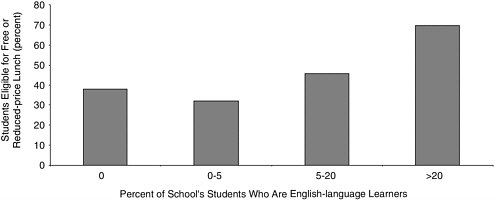
FIGURE B-3 Poverty concentration and English-language learners. (English-language learner data from the 2000 E&S survey. Data on free/reduced-price lunch eligibility from Common Core of Data, 2000–2001. Data on free/reduced-price lunch eligibility are not available for the following states: AZ, CT, IL, TN and WA.)
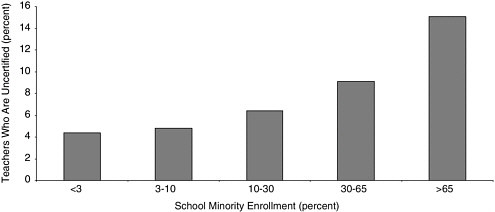
FIGURE B-4 School minority enrollment and uncertified teachers. *9 percent of U.S. teachers do not hold state teaching certificates. (Data from the 2000 E&S survey. The data do not include special education and alternative schools [school n = 81,858]. Minority enrollment includes American Indians, blacks, and Hispanics.)
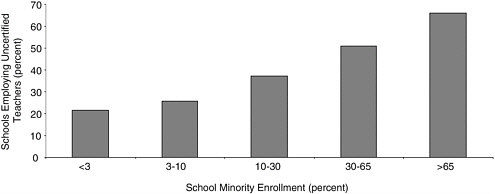
FIGURE B-5 Minority enrollment and schools employing any uncertified teachers. *60 percent of all public schools employ only state-certified teachers. (Data from the 2000 E&S survey. The data do not include special education or alternative schools [school n = 82,341]. Minority enrollment includes American Indians, blacks, and Hispanics.)
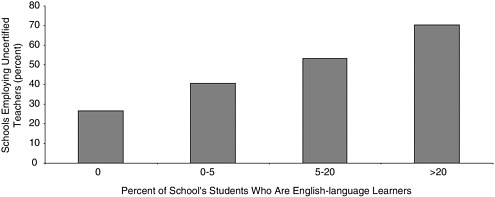
FIGURE B-6 Uncertified teachers and English-language learners. (Data from the E&S survey. The data do not include special education and alternative schools [school n = 80, 424].)
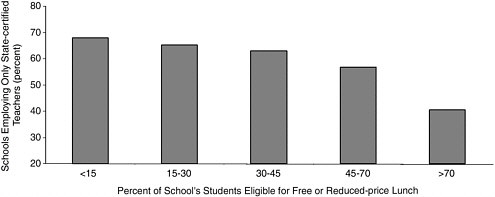
FIGURE B-7 Poverty concentration and access to state-certified teachers. (Teacher certification data from the 2000 E&S survey. Data on free/reduced-price lunch eligibility from Common Core of Data, 2000–2001. The data do not include special education and alternative schools [school n = 64,969]. Data on free/reduced-price lunch eligibility are not available for the following states: AZ, CT, IL, TN, and WA.)
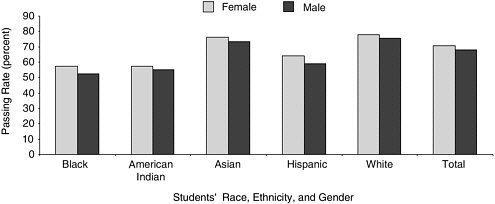
FIGURE B-8 Proportion of high school students passing tests that are the sole criterion for graduation. (Data from the 2000 E&S survey. Schools were instructed to consider a test the “sole criterion” for graduation if “all students were required to take a district-or-state-required test, and must pass the test to graduate from high school.” A total of 2,652 schools required these tests; 585,709 high school students took such tests, 406,502 of whom passed.)
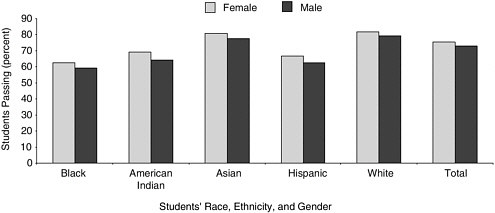
FIGURE B-9 Proportion of high school students passing tests that are a significant criterion for graduation. (Data from the 2000 E&S survey. Schools were instructed to consider a test of “significant criterion for graduation” if all students were required to take a district-or-staterequired test, and the test is an important criterion in the decision on whether or not the student graduates from high school, but other criteria, such as teacher recommendations or the student’s grades were used in the graduation decision.” A total of 5,269 high schools required these tests; 1,149,780 high school students took such tests, 853,625 of whom passed.)
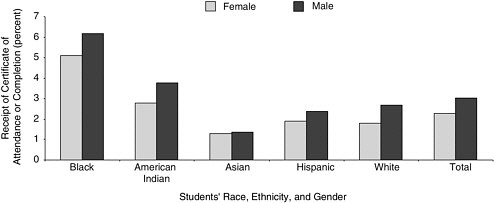
FIGURE B-10 Proportion of U.S. high school graduates receiving certificates of attendance or completion. (Data are projections from the 2000 E&S survey. Projections by the Office for Civil Rights (OCR) indicate that there were 2,605,843 public high school graduates in 2000, of whom 69,081 received certificates of attendance or completion. OCR defines a certificate of attendance or completion as “an award of less than a regular diploma, or a modified diploma, or fulfillment of an IEP for students with disabilities.”)
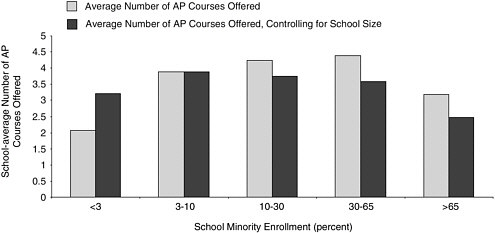
FIGURE B-11 High school minority enrollment and access to advanced placement (AP) courses. (Data from the 2000 E&S survey. The data do not include special education and alternative high schools [school n = 15,920]. Minority enrollment includes American Indians, blacks, and Hispanics.)
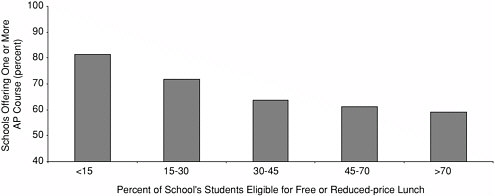
FIGURE B-12 Poverty concentration and access to advanced placement (AP) courses. (AP data from the 2000 E&S survey. Data on free/reduced-price lunch eligibility from CCD, 2000–2001. The data do not include special education or alternative high schools [school n = 11,299]. “High schools” include all schools enrolling eleventh and twelfth graders. Data on free/reduced-price lunch eligibility not available for the following states: AZ, CT, IL, TN, and WA.)
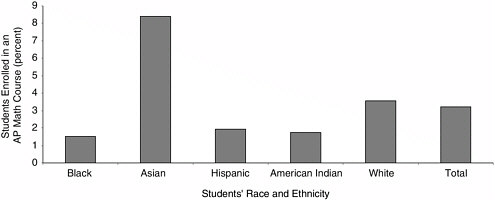
FIGURE B-13 Proportion of high school students enrolled in an advanced placement (AP) math course. (Data from the 2000 E&S survey. Data include only students attending high schools in which AP math courses are available. Alternative and special education high schools are not included in these calculations.)
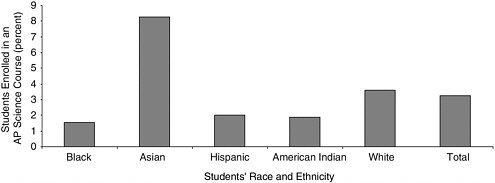
FIGURE B-14 Proportion of high school students enrolled in an advanced placement (AP) science course. (Data from the 2000 E&S survey. Data include only students attending high schools in which AP science courses are available. Alternative and special education high schools are not included in these calculations.)
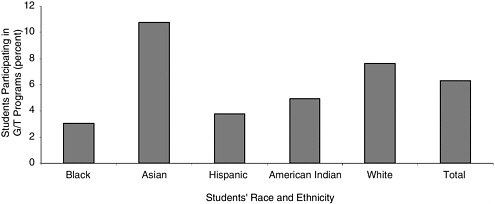
FIGURE B-15 Proportion of students participating in gifted and talented programs. (Data from the 2000 E&S survey. Gifted and talented programs are defined by OCR as special programs during regular school hours for students who possess unusually high academic ability or a specialized talent or aptitude, such as in literature or the arts.)
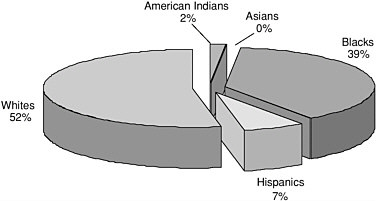
FIGURE B-16 Racial and ethnic composition of students receiving corporal punishment (n = 342,031). (Projections from the 2000 E&S survey. Corporal punishment includes paddling, spanking, and other forms of physical punishment. Students were counted only once, regardless of the number of times they received corporal punishment.)
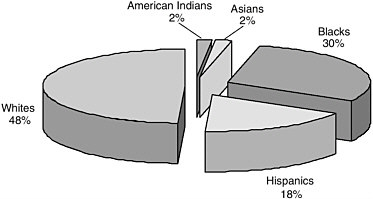
FIGURE B-17 Racial and ethnic composition of expelled students. (Projections from the 2000 E&S survey. Expulsion is defined as the exclusion from school for disciplinary reasons that results in the student’s removal from school attendance rolls or that meets the criteria for expulsion as defined by the appropriate state or local school authority.)
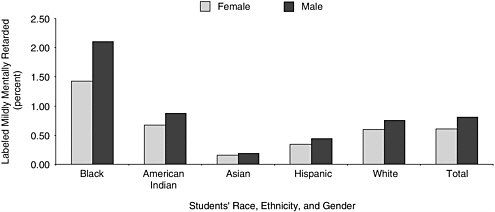
FIGURE B-18 Proportion of U.S. public school students labeled mildly mentally retarded by race, ethnicity, and gender. (Data from the 2000 E&S survey. Total student n = 45,837, 331; E&S data indicate 327,397 students were labeled mildly mentally retarded.
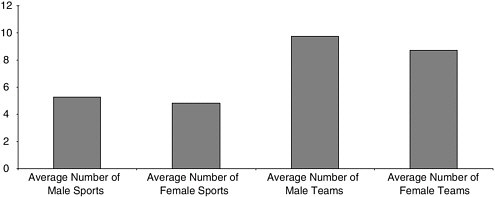
FIGURE B-19 Gender equity in high school athletics. (Data from the 2000 E&S survey. The data do not include special education and alternative high schools [school n = 15,216].)
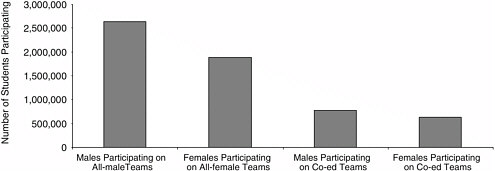
FIGURE B-20 Gender and participation in high school athletics. (Data from the 2000 E&S survey. The data do not include special education and alternative high schools [school n = 14,216].)
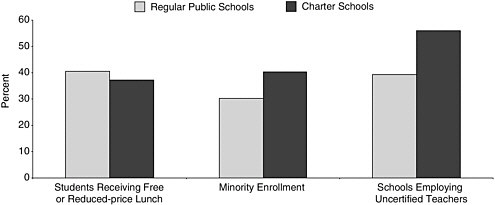
FIGURE B-21 Comparing charter and regular public schools: Student and teacher characteristics. (Data from the 2000 E&S survey. The data do not include special education and alternative schools. Data on free/reduced-price lunch eligibility from Common Core of Data, 2000–2001. Minority enrollment includes American Indians, blacks, and Hispanics. For free/ reduced-price lunch comparison, regular school n = 68,424; charter school n = 573. For other comparisons, regular school n = 81, 297; charter school n = 1,007.)












